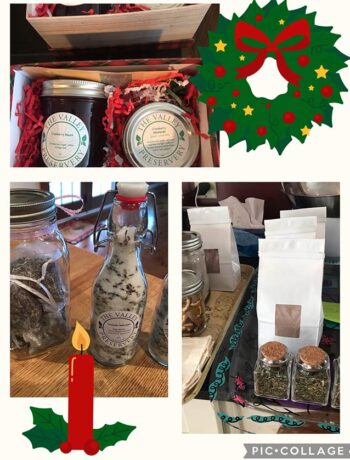I recently stumbled upon a grand, sprawling and very ancient mulberry tree. Although most mulberries have a short life span, it’s reported that there are specimens 250 years old! White, red, and black mulberry bushes and trees originated in China and India thousands of years ago and were domesticated around the world thereafter. Some cultivation was specifically done to feed silkworms that enjoyed the leaves. Today, wild, and domestic mulberries abound. I think of them as an old-fashioned fruit often made into pies, jams, jellies, juices, wine, and ice cream.
Mulberries are rich in Vitamin C and are therefore considered to be a “power food” with high anti-oxidant capabilities. They have low acidity and are low in pectin, both of which inform food preservation practice. This means that jams and jellies will require acidification and a generous addition of pectin. You can dehydrate, freeze, can whole in water, syrup, or juice, or make jams & jellies. Jelly might be preferred because just like raspberries, mulberries also have a lot of little seeds that aren’t pleasant.
The National Centre for Home Food Preservation provides recipes using both powered and liquid pectin. There are many online stories about failed sets with mulberries, so I suggest you use this recipe if you’re lucky enough to have mulberries in your backyard.
“Round and round the mulberry bush” is an old English nursery rhyme familiar to many of us. Though we would not find many monkeys chasing weasels these days, we are still fortunate to find mulberry trees and bushes providing us with beautiful fruit for preserving.
For information: preservingwithmartha@gmail.com
Mulberry Jelly (yield is 8 cups)
Ingredients
- 3 cups mulberry juice (extracted from 3 pounds of berries, cleaned, and trimmed)
- ½ cup lemon juice
- 7 cups sugar
- 2 pouches liquid pectin
Instructions
Put cleaned mulberries in a large pan, crush them until juices are released. Bring to a simmer and cook for 15 minutes. Put into a dampened jelly bag or cheesecloth lined sieve and drain off the juices. Measure 3 cups.
Add juice, sugar and lemon juice to the pot and bring to a full rolling boil (the boil cannot be beaten down). Add the full packets of liquid pectin. Bring back to a boil and boil hard for 1 minute. Pour into clean, hot jars. Clean rims of jars. Affix lids and rings to ‘finger-tip tight’.
Place jars in a boiling water bath canner or steam canner and process for 10 minutes adjusting for altitude. Let rest 5 minutes. Remove to a heat-proof surface and let stand for 24 hours. Check seals, label, and store for up to 2 years.






No Comments